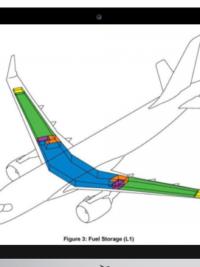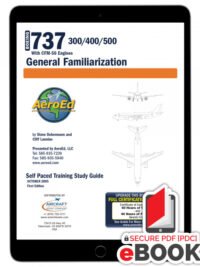Description
Course Structure and Content
The Boeing 757 – 200/300 Series General Familiarization Course is meticulously designed to offer a comprehensive understanding of the aircraft’s major components and systems. This course is structured into detailed modules, each focusing on specific aspects of the aircraft, ensuring a holistic learning experience. The content is aligned with ATA 104 and EASA Part 66 Level 1 standards, providing a thorough grounding in the technical specifications and maintenance protocols for the Boeing 757 – 200/300 series.
One of the primary focuses of the course is the in-depth study of the Pratt & Whitney PW2000 and Rolls Royce RB211 engines. Through these modules, participants will explore the intricacies of the engines’ operation and maintenance practices. Each module is meticulously divided into ATA sections, ensuring that learners can follow along with the established industry standards for aircraft maintenance and engineering.
The course materials are delivered through PowerPoint-type presentations, which cover various systems outlined in the aircraft maintenance manual. These presentations provide a visual and structured way to grasp complex technical details. Each chapter concludes with a quiz, designed to test comprehension and reinforce the learning outcomes, ensuring that participants are well-prepared before moving on to the next section.
Additionally, critical learning outcomes include understanding safety precautions and best maintenance practices. The course offers detailed insights into the general layout of the Boeing 757’s major systems and powerplant. Participants will gain familiarity with both cockpit and remote interfaces, as well as the special tooling and test equipment used in maintaining the aircraft.
Through this structured approach, learners will be adept at identifying component locations, comprehending their operations, and recognizing various maintenance needs. The comprehensive coverage of all systems ensures that by the end of the course, participants will have a robust understanding of the Boeing 757 – 200/300 series, equipping them with the essential knowledge needed for effective aircraft maintenance and safety.
Completion Benefits and Additional Considerations
Completing the Boeing 757 – 200/300 Series General Familiarization Course offers a myriad of benefits for aviation maintenance technicians (AMTs) and training managers alike. Upon successful completion of all chapters, participants are awarded a serial numbered certificate, which serves as a valid certification for new AMTs and those preparing for pivotal career interviews. This recognition can significantly enhance employability and professional credibility in the competitive aviation industry.
Beyond the certification, participants are eligible to receive 8 hours of Inspection Authorization (IA) renewal credit and 40 FAA FAAST (Federal Aviation Administration Safety Team) AMT award points. These credits are integral for IA holders, as they fulfill the entirety of their annual continued training requirements. Both certifications and credits are authorized through the FAA, with printable certificates accessible via the FAA Safety website, ensuring all documentation is both official and easily obtainable.
For training managers, the course’s self-paced nature is particularly advantageous. This flexibility allows for seamless integration into existing training programs without disrupting workforce availability. Managers can confidently incorporate this method to ensure comprehensive training while maintaining operational efficiency. This adaptability is essential for modern aviation training programs seeking to optimize both time and resources.
Upon purchasing the course, participants will receive detailed instructions for obtaining login credentials, ensuring they can commence training promptly. Support contact information is readily available to address any questions or technical issues, providing a smooth and supportive learning experience. Additionally, guidance for FAA FAAST registration is provided, streamlining the process and ensuring participants can fully reap the benefits of their training investments.
The comprehensive nature of the Boeing 757 – 200/300 Series General Familiarization Course, paired with its robust certification and credit offerings, makes it an invaluable resource for those in the aviation field. Whether for career advancement or fulfilling annual training requirements, this course stands as a cornerstone of professional development and industry compliance.










Reviews
There are no reviews yet.